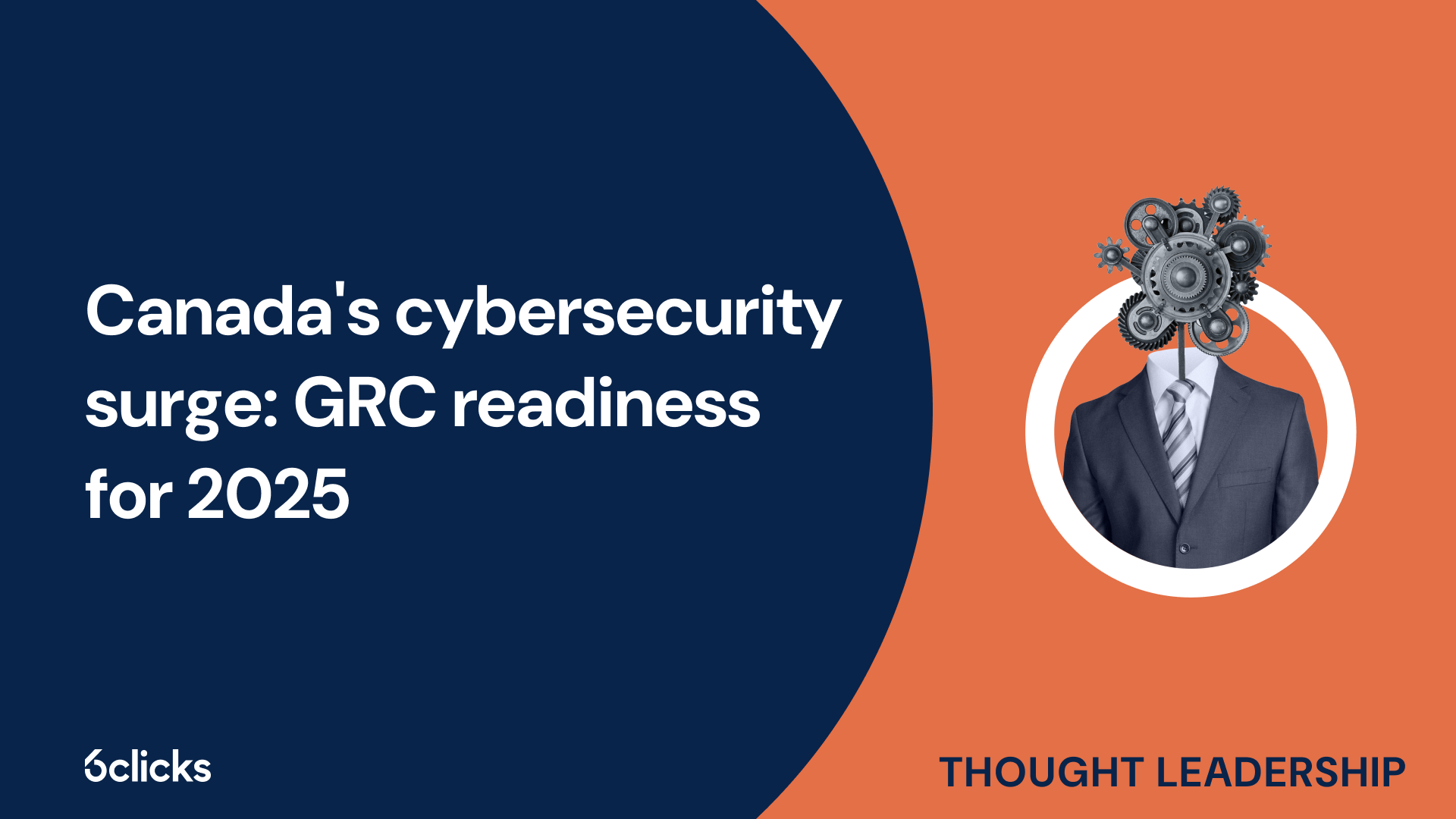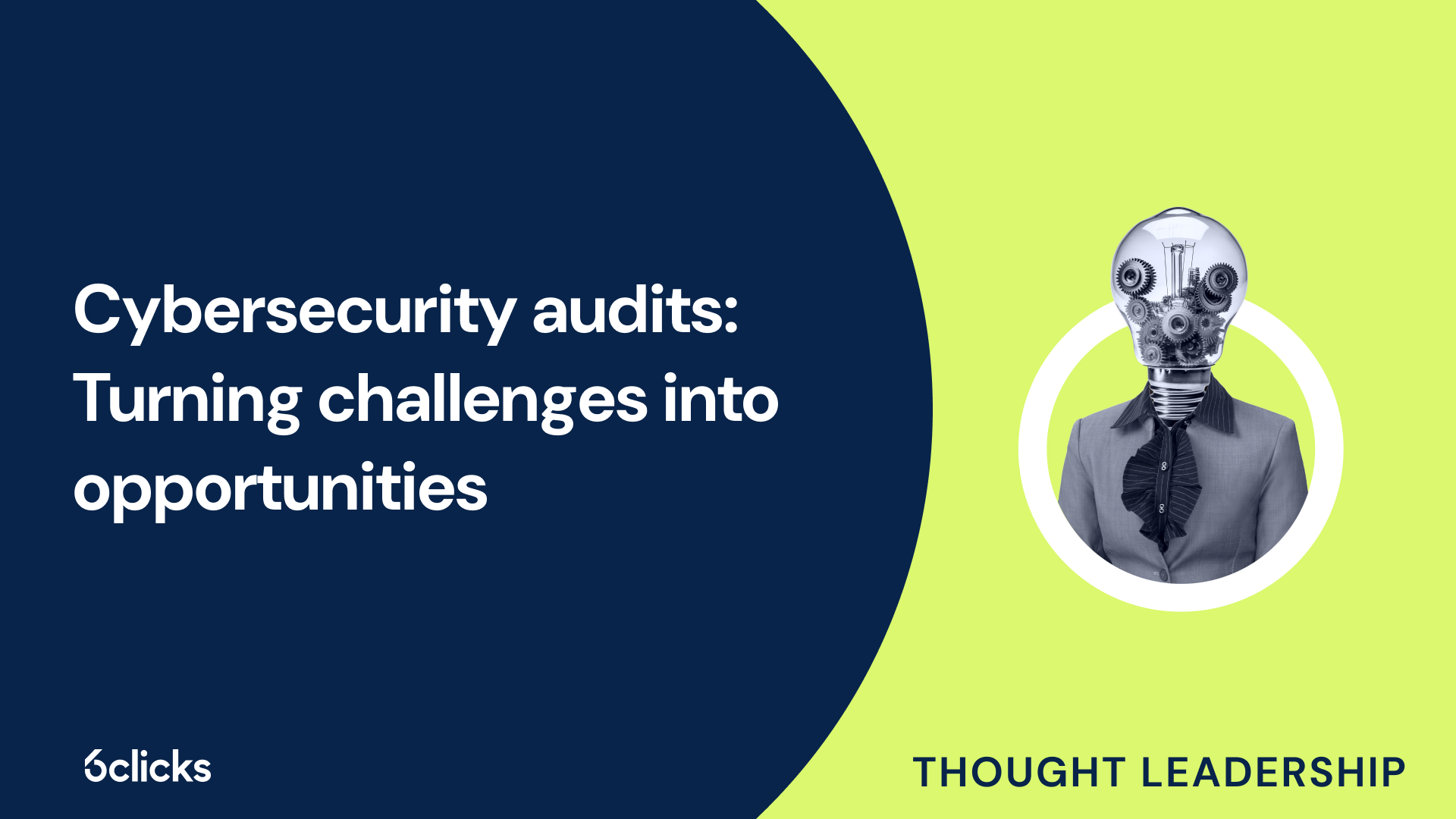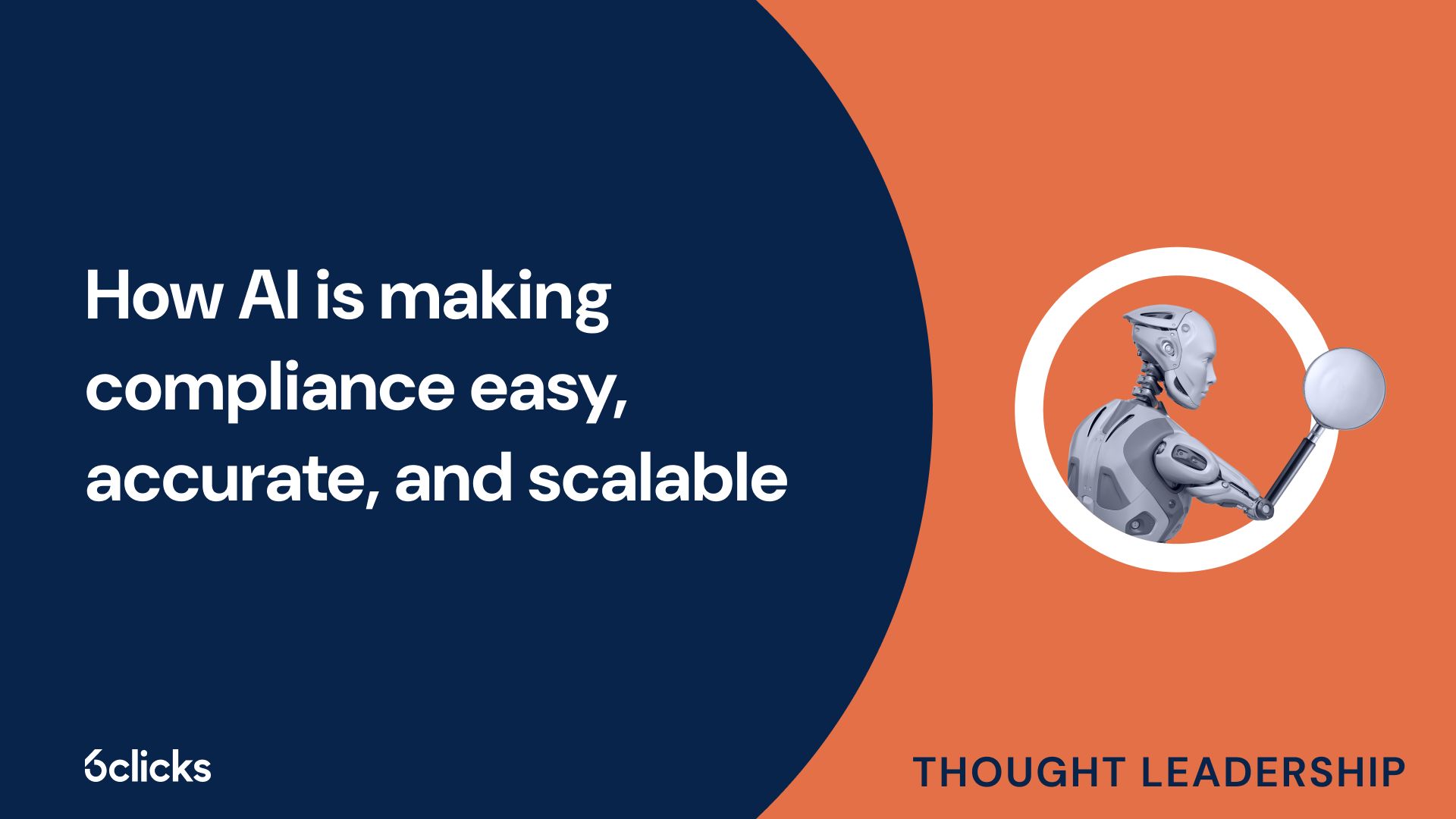The GRC buyer’s guide for 2025: Building resilience with AI-powered, federated solutions
Discover the ultimate GRC buyer's guide for 2025! Uncover how AI-powered, federated solutions transform compliance and security management for industries like government, aerospace, banking, and more. Learn about centralized control, continuous compliance, and advanced cyber GRC capabilities. Download now!
-1.png?width=200&height=249&name=Group%20193%20(1)-1.png)
The GRC buyer’s guide for 2025: Building resilience with AI-powered, federated solutions
What is FedRAMP?
The Federal Risk and Authorization Management Program (FedRAMP) is a government-wide program that provides a standardized approach to security assessment, authorization, and continuous monitoring for cloud products and services. It was created to address the unique security requirements of federal agencies and ensure that cloud service providers (CSPs) meet the necessary security standards. FedRAMP plays a critical role in safeguarding the security and data of federal government agencies, impacting national security and protecting sensitive information. By establishing a comprehensive framework and a rigorous authorization process, FedRAMP enables government organizations to confidently adopt cloud technology while maintaining a high level of security. The program ensures that CSPs adhere to consistent security control requirements, undergo thorough third-party assessment, and continuously monitor and report any potential security breaches. With FedRAMP certification, CSPs can offer their secure cloud solutions to both the public and private sectors, promoting trust and confidence in their services.
Why is FedRAMP needed?
FedRAMP, or the Federal Risk and Authorization Management Program, is crucial for ensuring the security of cloud services used by federal agencies. In today's digital age, the federal government heavily relies on cloud technology to store, process, and manage vast amounts of sensitive data. However, as cyber threats continue to evolve, it is essential to have safeguards in place to protect this valuable information.
One of the primary reasons why FedRAMP is needed is to protect federal data from security breaches. By implementing standardized security standards and requirements, FedRAMP ensures that cloud service providers offer robust security practices to safeguard federal data from unauthorized access, data loss, or other malicious activities.
In addition to data protection, FedRAMP also addresses the need for cost reduction and efficiency improvement. With a standardized approach to security assessment and authorization, cloud service providers can undergo a thorough evaluation process once and receive a FedRAMP authorization, which can be reused by multiple government agencies. This eliminates the need for redundant security assessments and significantly reduces costs and resources for both federal agencies and cloud providers.
Furthermore, FedRAMP promotes transparency between the government and cloud providers. By providing a comprehensive framework and set of security controls, it ensures a clear understanding of security requirements and facilitates open communication between both parties. This standardized approach not only streamlines the authorization process but also fosters trust and collaboration between the government and cloud service providers.
The Need for standardization in security requirements
In today's digital landscape, where data breaches and cyber threats are a constant concern, standardization in security requirements is crucial. This is particularly true for federal agencies and government organizations that handle sensitive and classified information. The need for standardization arises from several factors. First and foremost, it ensures a consistent and robust approach to security assessment and authorization across cloud service providers. By establishing uniform security controls and practices, it becomes easier to evaluate the security posture of different providers and make informed decisions. Standardization also streamlines the authorization process by eliminating redundancies and reducing costs. Moreover, it increases transparency and trust between government agencies and cloud providers, fostering collaboration and effective communication. By adhering to standardized security requirements, federal agencies can confidently leverage cloud technology while ensuring the utmost protection of their data.
How does the government ensure security of cloud service providers?
The government plays a crucial role in ensuring the security of cloud service providers. It has implemented processes and measures to assess and monitor the security of these providers to safeguard sensitive data and information.
One of the key initiatives in this regard is the Federal Risk and Authorization Management Program (FedRAMP). FedRAMP evaluates the security of cloud services and products offered to federal agencies by cloud service providers. It follows a two-step evaluation process: a security documentation review and an independent security assessment.
Cloud service providers must meet stringent security control requirements and provide a security assessment package, including a security plan, security assessment report, and other relevant documentation. These materials are evaluated by a third-party assessment organization to determine the provider's compliance with FedRAMP standards.
Once a cloud service provider achieves FedRAMP compliance, it receives a provisional authorization to operate (ATO). However, the evaluation process does not end there. Ongoing audits and assessments ensure that cloud service providers continue to meet the required level of security.
By implementing FedRAMP and conducting continuous monitoring, the government ensures that cloud service providers maintain the necessary security controls to protect the data and information of federal agencies. This standardized approach enhances the security of cloud solutions and instills confidence in the use of cloud technology within the public and private sectors.
What Are the benefits of having a standardized approach?
Having a standardized approach for security requirements, as exemplified by FedRAMP, has several benefits. Firstly, it helps to streamline and simplify the security assessment and authorization process for cloud service providers, making it more efficient and cost-effective. By establishing a consistent set of security control requirements, FedRAMP reduces duplicative efforts and inconsistencies that can arise when different federal agencies individually assess and authorize cloud service providers.
With a standardized approach, cloud service providers can develop and implement security practices that align with the established framework, rather than having to navigate a complex web of varying requirements from different agencies. This not only saves time and resources but also ensures a more uniform and reliable level of security across federal agencies.
Moreover, a standardized approach promotes a public-private partnership. By collaborating with private sector organizations and leveraging their expertise and innovation, FedRAMP helps to foster the development of more secure information technologies. This partnership allows federal agencies to benefit from the advancements and best practices implemented by cloud service providers, while also driving the continuous improvement of security standards and controls.
How can a security assessment be facilitated?
A security assessment plays a crucial role in evaluating and ensuring the effectiveness of security measures implemented by cloud service providers. By following a structured approach, a security assessment can be facilitated in order to identify potential vulnerabilities and risks.
The first step in the process is to hire a third-party assessor who is experienced in conducting security assessments. This independent professional will thoroughly review the implementation of FedRAMP, ensuring that all relevant security controls and requirements are being met. Their expertise and objectivity bring credibility to the assessment process.
Next, the third-party assessor prepares a comprehensive security assessment report (SAR) documenting the findings and compliance with the requirements. This report serves as a valuable reference for federal agencies to understand the security posture of the cloud service provider and make informed decisions.
In addition to meeting compliance requirements, the implementation of robust technical security controls is essential to demonstrate maturity and strengthen security measures. These controls include encryption, access controls, intrusion detection systems, and vulnerability scanning. Implementing these controls not only safeguards sensitive information but also helps to build trust between the cloud service provider and federal agencies.
Lastly, executing a risk assessment is vital to identify and prioritize potential scenarios that could compromise information, systems, or services. This assessment allows organizations to understand the potential impact of threats and vulnerabilities and allocate resources accordingly to mitigate risks effectively.
By following these steps, a security assessment can be facilitated, enabling federal agencies to make informed decisions regarding the security of their cloud service provider. Implementation of third-party assessment, generation of a security assessment report, utilization of technical security controls, and execution of a risk assessment are crucial aspects of this process.
The authorization process
The authorization process for FedRAMP is a crucial step in ensuring the security of cloud solutions used by federal government agencies. This process involves a standardized approach to security assessment, which includes hiring a third-party assessor, conducting a thorough security assessment, implementing robust security controls, and executing a risk assessment. By adhering to this rigorous authorization process, federal agencies can have confidence in the security of the cloud service providers they choose to work with. The process provides a clear framework for assessing and mitigating risks, ensuring that sensitive information and systems are protected from potential security breaches. Additionally, the authorization process establishes a level of trust between cloud service providers and federal agencies, as it demonstrates a commitment to meeting and surpassing the strict security requirements set forth by the government. Through this process, federal agencies can confidently leverage the benefits of cloud technology while ensuring the confidentiality, integrity, and availability of their data.
What is the FedRAMP authorization process?
The FedRAMP authorization process is a standardized approach to security assessment and authorization for cloud service providers (CSPs) seeking to work with federal agencies. This process ensures the security of cloud solutions used by federal government agencies by establishing a set of security requirements and controls.
The authorization process consists of four main steps. The first step is package development, which involves the CSP working with a third-party assessment organization (3PAO) to develop the necessary documentation. This includes the completion of a System Security Plan (SSP) and the development of a Security Assessment Plan (SAP).
The second step is the assessment phase. The CSP submits the completed Security Assessment Plan to the 3PAO, who then conducts a thorough assessment of the system's security controls. The assessment results are documented in a Security Assessment Report (SAR), which is submitted to the FedRAMP office for review.
The third step is authorization. The Joint Authorization Board (JAB) or the authorizing agency reviews the SAR and determines if the risk is acceptable. If approved, they issue an Authority to Operate (ATO) letter, granting the CSP permission to operate the cloud service for federal agencies. This ATO is valid for one year.
The final step is the monitoring phase. The CSP is required to provide monthly security monitoring deliverables to each agency using the service. This includes continuous monitoring for cloud products and services, as well as the development of a Plan of Action & Milestones (POA&M) to address any identified weaknesses or vulnerabilities.
What are impact levels and their significance for authorization?
In the FedRAMP authorization process, impact levels play a crucial role in assessing the level of risk and determining the security requirements for cloud services and products. Impact levels are used to classify the potential impact that a security breach or incident could have on the confidentiality, integrity, and availability of federal information.
These impact levels, ranging from low to moderate to high, help government agencies understand the severity of the potential impact and ensure that the appropriate security controls are implemented. Each impact level has its own baseline of security control requirements that must be met to achieve authorization.
Low impact level is associated with cloud services and products that, if compromised, would result in limited adverse effects on operations, assets, or individuals. The corresponding security control baseline for this level is relatively small since the potential impact is low.
Moderate impact level is assigned to cloud services and products that, if compromised, may have serious adverse effects on operations, assets, or individuals. The security control baseline for this level is more comprehensive to mitigate the higher level of potential impact.
High impact level is assigned to cloud services and products that, if compromised, could result in severe adverse effects on operations, assets, or individuals. The security control baseline for this level is the most rigorous as it addresses the highest level of potential impact.
By categorizing cloud services and products into impact levels, the FedRAMP authorization process ensures a standardized approach to security assessment and helps government agencies select the appropriate security controls based on the level of risk. This approach provides a consistent framework for evaluating and authorizing cloud providers' offerings, promoting the security and protection of federal information in the cloud.
What security packages are offered by cloud providers under FedRAMP compliance?
Under FedRAMP compliance, cloud providers offer various security packages to ensure the security of cloud solutions for federal government agencies and other organizations. These security packages include:
- Security Assessment Package: This package consists of the security assessment report and security plan, which are essential components for the authorization process. It provides a detailed analysis of the cloud service provider's security practices and controls.
- Security Control Baseline: The security control baseline package outlines the specific security controls that must be implemented by the cloud provider to meet the FedRAMP requirements. It serves as a foundation for ensuring the confidentiality, integrity, and availability of cloud solutions.
- Continuous Monitoring: Cloud providers offer continuous monitoring capabilities to monitor the security of their cloud services and detect any potential security breaches. This package includes tools and processes for ongoing security assessment and compliance monitoring.
These security packages play a crucial role in ensuring the security of cloud solutions for federal government agencies and other organizations. By following the FedRAMP compliance requirements, cloud providers adhere to standardized security controls and practices. This helps in protecting sensitive data, mitigating security risks, and ensuring the confidentiality, integrity, and availability of cloud solutions. Furthermore, the continuous monitoring capabilities provided by cloud providers enable proactive identification and response to any security issues, ensuring the ongoing security of cloud solutions. This level of security reassurance is vital for federal government agencies, as it allows them to confidently leverage cloud technology while meeting their specific security requirements.
Department of defense (DoD) requirements for cloud service offerings
The Department of Defense (DoD) has specific requirements for cloud service offerings to ensure the security of their sensitive data and operations. These requirements encompass robust security standards and controls that must be met by cloud service providers.
The DoD mandates adherence to strict security standards that align with federal regulations and industry best practices. This includes compliance with the Federal Risk and Authorization Management Program (FedRAMP), a government-wide program that provides a standardized approach to security assessment, authorization, and continuous monitoring for cloud products and services.
FedRAMP's authorization and monitoring processes align seamlessly with DoD's requirements. FedRAMP provides a comprehensive framework that assesses the security controls and practices of cloud service providers against a predefined set of standards. This includes evaluating the provider's security assessment package, security control baseline, and continuous monitoring capabilities.
Working with a FedRAMP compliant cloud service provider offers several benefits for the DoD. Firstly, FedRAMP certification ensures that the provider has undergone a rigorous security assessment process and is compliant with stringent security standards. This enhances the level of security and trust in the cloud service offerings used by the DoD.
Furthermore, the continuous monitoring practices employed by FedRAMP compliant providers enable real-time monitoring of security controls and detection of potential threats. This proactive approach to security minimizes the risk of security breaches and ensures the ongoing protection of DoD's sensitive data and operations.
Surveillance and continuous monitoring for cloud products/services
Surveillance and continuous monitoring are vital components of the Federal Risk and Authorization Management Program (FedRAMP) that ensure the security of cloud products and services. With the ever-evolving threat landscape, the need for continuous monitoring has become even more critical in the protection of sensitive data and operations. FedRAMP's standardized approach to security assessment and authorization includes robust surveillance measures that enable real-time monitoring of security controls. This continuous monitoring process allows for the early detection and mitigation of potential threats and vulnerabilities, minimizing the risk of security breaches. By ensuring ongoing visibility and proactive response to security incidents, FedRAMP compliant cloud service providers offer a higher level of security assurance and deliver secure cloud solutions that meet the stringent requirements of federal agencies, including the Department of Defense.
How Is surveillance used to monitor the performance of cloud products/services over time?
Surveillance plays a crucial role in monitoring the performance of cloud products and services over time. It involves the continuous monitoring of the security controls and systems in place to ensure that they are operating effectively. This monitoring process helps identify any vulnerabilities or weaknesses that may arise, allowing for prompt action to mitigate potential risks.
By implementing surveillance, cloud service providers can assess the overall security of the cloud system. This includes monitoring access control, data encryption, incident response, and other security measures. Through regular surveillance, any issues or deviations from the established security requirements can be promptly detected and remediated, ensuring the ongoing protection of sensitive data.
Cloud service providers have the responsibility to send monthly security monitoring deliverables to the relevant authorities. These deliverables typically include reports on the performance and effectiveness of the security controls, any incidents or vulnerabilities identified, and actions taken to mitigate risks. This allows for transparency and accountability in maintaining the security of the cloud system.
Third-party assessment organization (3PAO) evaluations under FedRAMP
Under the Federal Risk and Authorization Management Program (FedRAMP), third-party assessment organizations (3PAOs) play a crucial role in evaluating the security posture of cloud service providers (CSPs) seeking FedRAMP authorization. These independent organizations conduct thorough assessments of a CSP's security controls and practices to ensure their compliance with the rigorous security requirements set by the federal government. Through their evaluations, 3PAOs provide an objective and unbiased assessment of a CSP's security capabilities, helping federal agencies make informed decisions about the use of cloud services. The involvement of 3PAOs in the FedRAMP authorization process adds an additional layer of assurance and confidence in the security of cloud solutions used by the federal government.
What role does 3PAO play in obtaining an authority to operate (ATO)?
In the process of obtaining an Authority to Operate (ATO) under the Federal Risk and Authorization Management Program (FedRAMP), a Third-Party Assessment Organization (3PAO) plays a crucial role. A 3PAO is an independent entity that evaluates and assesses the security controls and practices of cloud service providers (CSPs) seeking FedRAMP authorization.
3PAOs are responsible for conducting a thorough evaluation of the security controls implemented by CSPs. They assess various aspects such as physical security, access controls, incident response procedures, data protection, and compliance with industry standards. This evaluation includes reviewing and testing the CSP's security plan, policies, and practices.
During the assessment, 3PAOs perform a detailed analysis of the CSP's security control implementation, documentation, and evidence to ensure compliance with FedRAMP's rigorous security standards. They provide an impartial and objective evaluation of the CSP's security posture and identify any vulnerabilities or non-compliance issues that need to be addressed.
The 3PAO's assessment findings are documented in a Security Assessment Report (SAR) that is submitted to the Federal government agency seeking FedRAMP authorization. The SAR outlines the CSP's level of compliance with the set security control requirements.
By engaging 3PAOs, the FedRAMP program ensures a standardized approach to security assessment and authorization process. This independent evaluation of CSPs' security practices and controls instills confidence in federal agencies that their data and systems are protected in the cloud.







